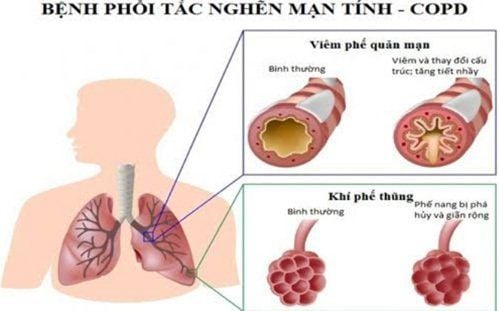This is an automatically translated article.
The article was professionally consulted by Specialist Doctor I Nguyen Duc Thong - Anesthesiologist - General Surgery Department - Vinmec Danang International Hospital.Epidural Anesthesia is an anesthetic method that is performed by introducing an appropriate amount of local anesthetic into the epidural space. Besides the advantages, patients also have a risk of experiencing side effects of epidural anesthesia.
1. What is epidural anesthesia?
Epidural anesthesia is a method of regional anesthesia, which is performed by introducing a suitable amount of anesthetic into the epidural space of the root canal. The distribution of nerves in the epidural space supplies sensation to certain regions of the abdomen and on the surface of the skin. Therefore, epidural anesthesia only causes loss of sensation in some areas due to nerve blockade. Compared with general anesthesia, epidural anesthesia has many advantages such as:Limiting the side effects of general anesthesia with endotracheal intubation: adverse effects on the respiratory and cardiovascular systems. Especially when general anesthesia by intubation can lead to laryngotracheobronchospasm, this risk is increased in people with bronchial asthma or chronic obstructive pulmonary disease. Helps relieve postoperative pain: The effects of epidural anesthesia can be prolonged for many hours after surgery by continuous infusion of local anesthetic through a catheter placed into the epidural space. While for general anesthesia, the patient will start to feel pain and discomfort right after waking up.

2. Side effects of epidural anesthesia
Epidural anesthesia is an effective, safe, and advantageous technique. However, like most other medical procedures, this method has certain side effects. Some patients when having epidural anesthesia will experience some phenomena such as:2.1. Low blood pressure This is the most common side effect of an epidural. The anesthetic affects the nerves that supply blood vessels, dilating the blood vessels leading to lower blood pressure. Symptoms of low blood pressure patients may experience such as headache, dizziness, nausea, dizziness, ... To prevent the risk of hypotension, the patient will be closely monitored blood pressure throughout the process. Monitor surgery. If hypotension occurs, the doctor will prescribe intravenous medication to stabilize the patient's blood pressure.

2.3. Infection If sterility is not ensured during the procedure, bacteria can enter the epidural space and cause an epidural abscess infection. Meningitis, an inflammation of the brain, has been described with an epidural abscess. In addition, an epidural abscess can compress the spinal cord, damage nerves, and lead to complete loss of mobility of the lower half of the body (lower extremity paralysis).
2.4. Complications from epidural puncture This complication occurs in 1-2% of cases of epidural. It is often easily recognized because of the presence of cerebrospinal fluid at the tip of the needle. Epidural puncture causes severe postoperative headache due to drainage of cerebrospinal fluid through the perforation into the epidural space. Characteristic of this type of headache is pain in the occipital region, in the front of the forehead, aggravated when standing up, sitting down, nausea and vomiting. Patients are treated with bed rest, analgesics, and fluid resuscitation. If there is no response, the doctor may consider patching the dura with the patient's own blood patch method. About 10-15ml of autologous blood will be injected into the epidural space right at the site of the dural puncture to help seal the perforation to the epidural. This method is effective in over 90% of cases.

2.6. Loss of bladder control After an epidural, because the anesthetic affects the surrounding nerves, the patient will not feel the need to urinate when the bladder is full. The surgical team will insert a urinary catheter into the patient's bladder to help drain the urine. As soon as the effect of the anesthetic wears off, the patient's bladder control will return to normal.
2.7. Itchy skin Some patients may experience itchy skin after an epidural. This condition usually goes away on its own without treatment or can be treated with topical medications very easily.

2.9. Back pain Many patients after surgery with an anesthetic method is an epidural will have back pain symptoms, especially for postpartum women. However, the studies that have been done have shown no increased risk of long-term back pain when an epidural is used. Patients will be guided in the appropriate movement posture to limit back pain.
Epidural Anesthesia is the most commonly used anesthetic technique today. This is a highly safe technique, and serious complications after an epidural are rare. According to research from cases of epidural anesthesia for pregnant women giving birth, it is estimated that the rate of permanent damage from this method is only from 1 in 80,000 to 1/320,000 cases. Before administering anesthesia, the patient and family will be explained by the medical staff about the method and discussed the possible side effects of the epidural.
Vinmec International General Hospital is one of the hospitals that strictly applies safe surgical anesthesia practice standards according to international guidelines. The epidural technique is conducted after ultrasound assessment of the spine and marking of the vertebral space need to be inserted, helping the anesthesiologist to administer anesthesia easily. With a team of experienced anesthesiologists and nurses, proficient in using ultrasound along with modern equipment such as nerve detectors, ultrasound machines, difficult airway control systems of Karl Storz, GE's AoA (Adequate of Anesthesia) comprehensive anesthesia monitoring system including monitoring of anesthesia, pain and muscle relaxation will deliver high quality and safety, helping patients to have adequate anesthesia, not awake , no residual muscle relaxant after surgery. Vinmec Health System is also proud to be the first hospital in Vietnam to sign with the World Anesthesiology Association (WFSA) towards the goal of becoming the safest hospital for surgical anesthesia in Southeast Asia.
Doctor Duc Thong has 14 years of experience in the field of Anesthesia. Especially, with 12 years working at the Department of Anesthesiology and Resuscitation at C Da Nang Hospital, Dr. Thong has extensive experience in the field of Anesthesia and resuscitation for elderly patients with many comorbidities and serious illnesses. surgery; helping many heavy and complicated surgeries to be successful. Currently, he is an anesthesiologist at the Department of General Surgery - Vinmec Da Nang International General Hospital.
If you have a need for consultation and examination at Vinmec Hospitals under the nationwide health system, please book an appointment on the website for service.
Please dial HOTLINE for more information or register for an appointment HERE. Download MyVinmec app to make appointments faster and to manage your bookings easily.














